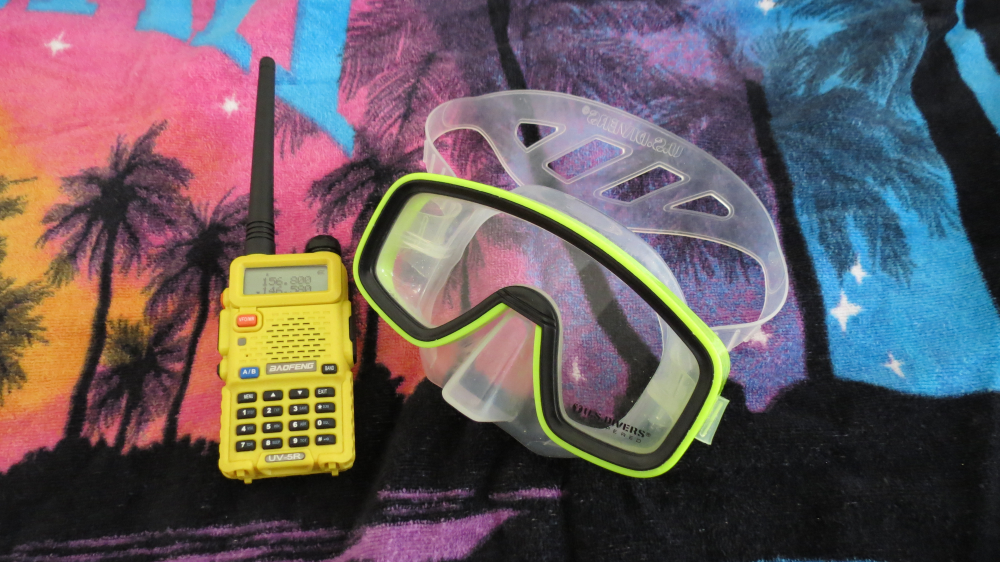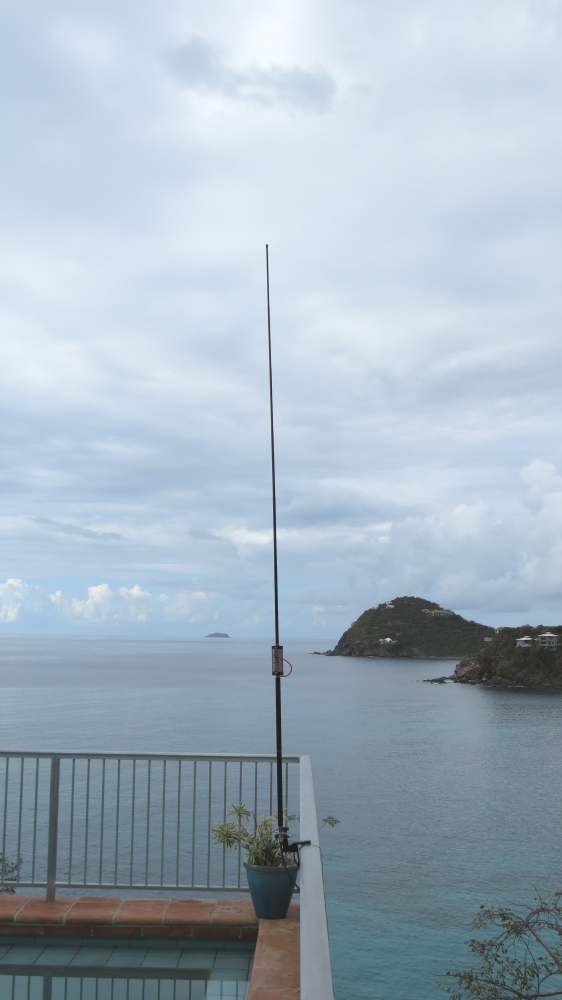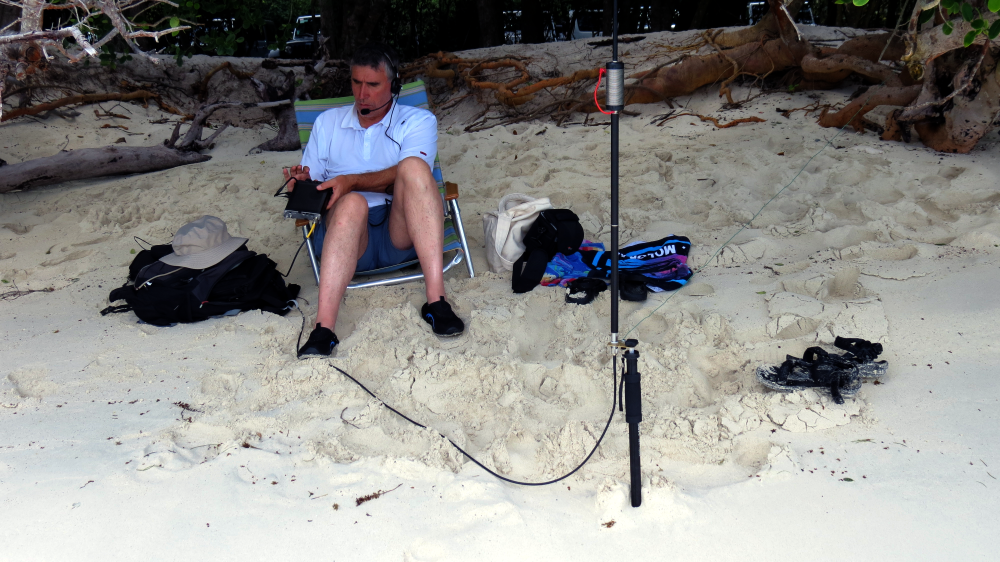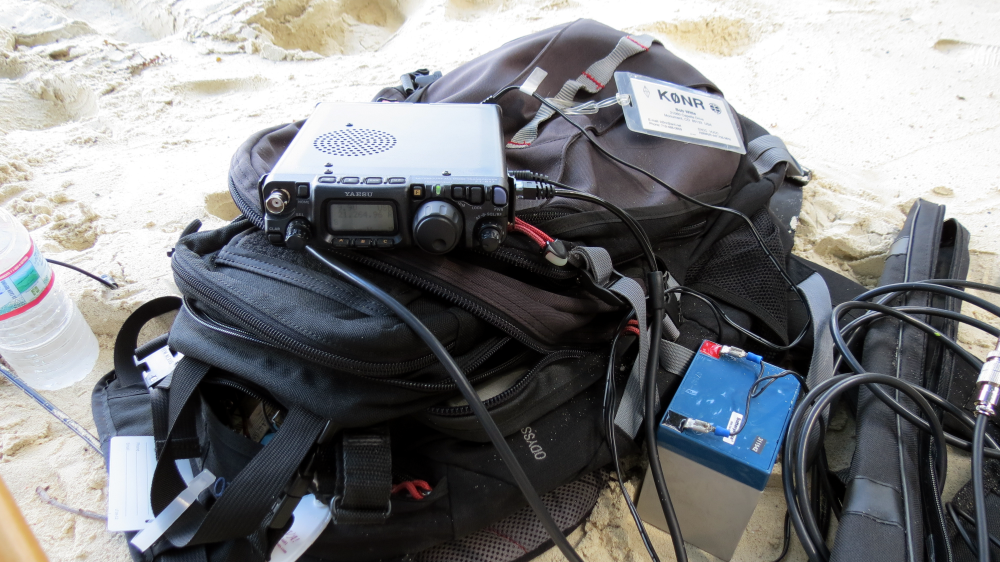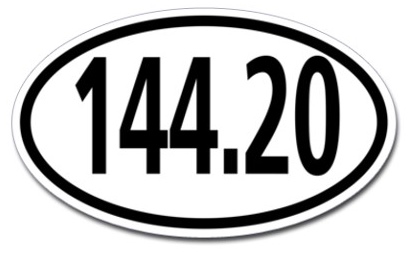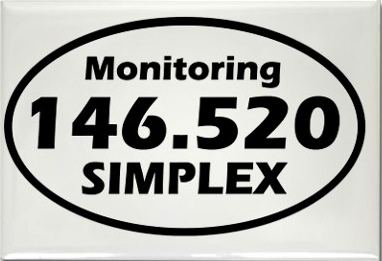Author Archive
 This Spewed Out of the Internet #27
This Spewed Out of the Internet #27
 More important things spewing forth from the interwebz:
More important things spewing forth from the interwebz:
The Ham Hijinks guys have been at it again, with this article: New Drug Aims To Get More Hams On The Air
Warning: Do Not Take These Guys Seriously, It Only Encourages Them
Chiming in on April 1st, Dan KB6NU reported that the FCC is going to reinstate the Morse Code test.
I posted an article about using UTC over at HamRadioSchool.com: Does Anybody Really Know What Time It Is?
KB9VBR has a nice article that explains the common types of antenna connectors used with ham radio.
Elliot KB0RFC has been writing some interesting stuff about D-STAR, DMR and other things digital on his blog. See his latest article: Developing a DMR / D-STAR radio
James R. Winstead, KD5OZY, of Coleman, Texas found out that sometimes the FCC does show up and bust radio amateurs that are causing problems on the air. See the ARRL article here. It always cracks me up when the FCC Engineer reports that during their station inspection, the offender’s radio is still tuned to the frequency where the problems were occurring.
Serious DXers all over the world are in severe depression after finding out that Crimea is Not a New DXCC Entity. Conspiracy Theory: the whole thing was instigated by a group of hams that believed Crimea would be a new one.
73, Bob K0NR
 The KP2 Slacker DXpedition Guide
The KP2 Slacker DXpedition Guide
I’ve had several opportunities to take amateur radio along on vacation and do a little radio operating from other countries. I try not to focus too much on ham radio during such a trip, as it has a tendency to create marital discord and can suck the fun out of the vacation. Some people call this a “holiday style” DXpedition, or maybe it’s just the slacker approach.
St John USVI
Joyce (K0JJW) and I were planning a vacation with three other couples that we’ve known for years. It turns out that six of the eight have their ham licenses. (We’re still working on the last two.) Our primary goal was to find an island location with great beaches and snorkeling. Someone proposed the island of St John in the US Virgin Islands and the idea took hold.
From a ham radio perspective, USVI is an interesting choice since it does count as a DXCC entity (“country”), even though it is a US possession. See my article on HamRadioSchool.com for more information on how that works. Anyone with an FCC license can operate from there without any special licensing or approval. KP2 is the prefix for USVI, so identify as KP2/<callsign> to indicate that you are operating from USVI.
Radio Gear
We were trying to pack light, so the radio equipment had to fit into our normal luggage. I took my Yaesu FT-817 and a Buddistick™ antenna. Paul (KF9EY) took along a Yaesu FT-100D, while Denny (KB9DPF) transported his FT-817 and a G5RV Junior antenna. Our primary operating mode was using the FT-100D (more power, baby) to drive the Buddistick, which was attached to the railing on the patio.
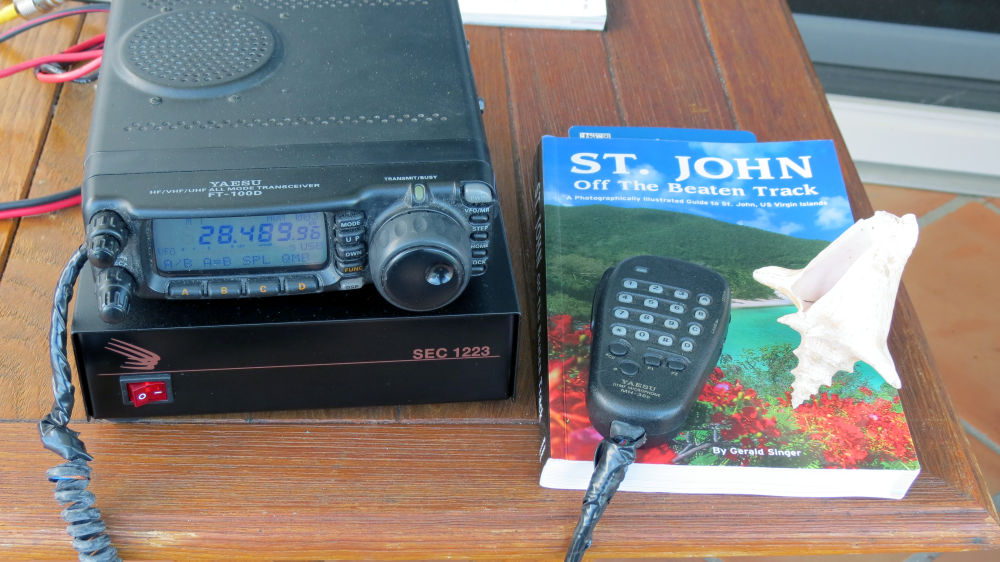
The FT-100D was the primary operating rig, carefully placed on a random table out by the pool, with the St John Guidebook nearby.
I decided that the true slacker approach required some Official Beach QRP contacts in the style of Buddies in the Caribbean (see the video). One day on the beach, I took along my FT-817 and the Buddistick and set up for some QRP action.
The Buddistick was mounted on a Dolica WT-1003 camera monopod stuck into the sand, with the radial trailing off into the vegetation. My compact Heil headset was a convenient way to make some phone contacts without blasting my fellow beach bums with noisy audio.
How did we do on the HF bands? We managed to make a number of contacts on 20m, 15m and 10m into the Americas and Europe. I was a bit disappointed that we never really got a pileup going. I think our signal was plenty strong but KP2 is maybe just not that rare.
We spent quite a bit of time exploring the island, driving around in two rental Jeeps. For mobile communications, we chatted back and forth on 146.58 MHz, the Golf-November-Tango frequency, using handheld transceivers. In the end, these radios probably got the most use during the trip. (Did I mention this was a slacker DXpedition?) There are a few 2m repeaters in the islands but we did not make use of them.
I brought a Yaesu FT-60 and a Baofeng UV-5R along on the trip, but mostly ended up using the Baofeng radio. If was the perfect radio to take to the beach — does the job and not that big of a loss if it landed in the ocean. Using the dual receive feature of the HT, I monitored the marine calling frequency, 156.80 MHz, listening to the boat traffic.
So if you are looking for a great place to go to enjoy the sand and water, I highly recommend St. John. Go ahead and take along some ham gear and do some slacker DXing. For more information on KP2 ham radio, see the ARRL Virgin Islands Section web site.
— 73, Bob KP2/K0NR
QSL to KP2/K0NR via Logbook of the World or to K0NR via Buro or Direct with SASE
 Get Your Mobile Frequency Sticker On
Get Your Mobile Frequency Sticker On
One of the things I try to do is monitor the National Simplex Calling Frequency for 2 meter FM: 146.52 MHz, especially when mobile. It is fun to see who might show up on 2m simplex: SOTA operators, hikers, mobile stations, campers, etc. See these two posts on operating ideas: A Simple Wilderness Protocol: 146.52 MHz and The Use of 146.52 MHz.
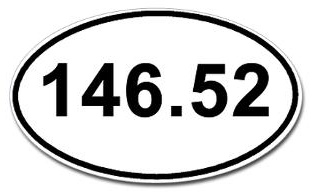 It is also fun to say hello to another ham when you pass them on the highway. While you may see their call letter license plates or notice their mobile antenna, you may not know what frequency they are monitoring. The Noise Blankers Radio Club has solved this problem — just put this sticker on your vehicle.
It is also fun to say hello to another ham when you pass them on the highway. While you may see their call letter license plates or notice their mobile antenna, you may not know what frequency they are monitoring. The Noise Blankers Radio Club has solved this problem — just put this sticker on your vehicle.
After poking around cafepress.com, I found some additional options for indicating your radio frequency:
The 2meter SSB calling frequency:
The APRS frequency:
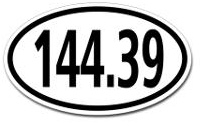
And there’s this magnet for your refrigerator:
If you don’t like any of these, cafepress.com makes it easy to create your own. Go for it!
73, Bob K0NR
 Bloody Proprietary Connectors
Bloody Proprietary Connectors
I came across this video rant by David L. Jones on the EEVblog concerning proprietary cables on consumer devices. I agree with him completely. Warning: some language not suitable for kids.
Unfortunately, if you look at ham radio gear, we are in even worse shape than the consumer market. Heck, even the freaking microphone connectors are unique to each manufacturer.
 Colorado 14er Event – August 3, 2014
Colorado 14er Event – August 3, 2014
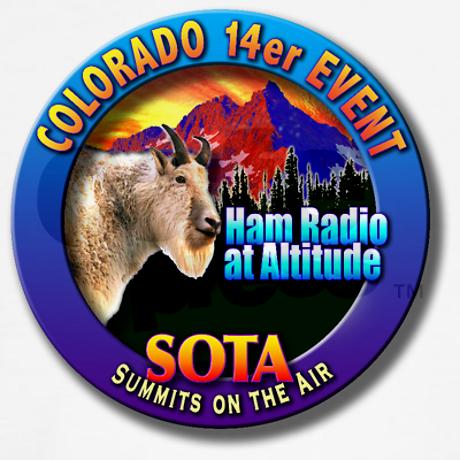 During the Colorado 14er Event, Amateur Radio operators will be climbing many of Colorado’s 14,000-foot mountains and SOTA summits to set up amateur radio stations to communicate with other radio amateurs across the state and around the world. Join in on the fun on Sunday August 3 and see how many of the mountaintop stations you can contact.
During the Colorado 14er Event, Amateur Radio operators will be climbing many of Colorado’s 14,000-foot mountains and SOTA summits to set up amateur radio stations to communicate with other radio amateurs across the state and around the world. Join in on the fun on Sunday August 3 and see how many of the mountaintop stations you can contact.
The new Colorado 14er Event logo is now available on t-shirts and more.
Starting in 2012, Summits on The Air (SOTA) is part of this event. This means there are over 1700 summits that you can activate in Colorado, with a wide variety of hiking difficulty. This opens up the event to a lot more people and a lot more summits. See the new SOTA page.
Radio operators with 14er climbing experience who plan to activate a summit should log their name and intended peak at the Ham14er Yahoo group. This is also the email list for discussing the event and asking questions.
 Solving the Baofeng Cable Problem
Solving the Baofeng Cable Problem
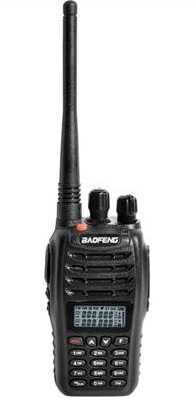 The various models of Baofeng handheld transceivers keep popping up everywhere. At prices less than $50, radio amateurs (including veterans and newbies) are scarfing up these radios. See my postings or check out PD0AC’s blog for more information.
The various models of Baofeng handheld transceivers keep popping up everywhere. At prices less than $50, radio amateurs (including veterans and newbies) are scarfing up these radios. See my postings or check out PD0AC’s blog for more information.
Also very frequently, the new owner of such a radio finds that they cannot figure out how to program it. Of course, the solution is “use the programming software” which is often helpful (and often not). The really gnarly problem that usually surfaces is getting the programming cable to work.
It appears that many of the cheap Baofeng USB programming cables use a clone of the Prolific PL-2303 chip that is not supported by the latest Windows driver. This Miklor web page does a good job of explaining the driver problem and giving some helpful advice. (Actually the Miklor site has tons of information on these radios, so check it out.) I’ll also note that the same cable can be used to program a Wouxun radio, so the same remedies apply. Using the info on the Miklor site allowed me to get my Baofeng/Wouxun cable working with my old Windows XP computer. When I bought a new notebook PC, it came with Windows 8 installed, which I later “upgraded” to Win 8.1. (I will spare you the sad story of dealing with Win 8 and 8.1) Anyway, I have not gotten the Baofeng cables to work on Win 8 or 8.1, even following the Miklor advice.
I started using the Chirp programming software, an open source application that supports a wide variety of radios. (I have found the supplied Baofeng and Wouxun software to be, uh, well, crapware. It can be made to work but it is a pain.) While the Chirp software is not bug free and is in perpetual beta, it basically works well and does a great job of supporting a wide range of radios. I noticed that the Chirp Cableguide recommends the use of programming cables with an FTDI USB chip. I found this one on Amazon for $19, a little more expensive than the cheapo cables but not bad. I plugged it into my Win8.1 computer and it started working immediately. I did not load any drivers, Windows actually did its job and took care of it for me. In minutes, I was programming a variety of Baofeng and Wouxun radios. Success!!!
My strong recommendation at this point is to use the Chirp software and get a FTDI-based programming cable. You will be a much happier Baofeng or Wouxun owner.
73, Bob K0NR
 Morse Code Ring Tones for Your iPhone
Morse Code Ring Tones for Your iPhone
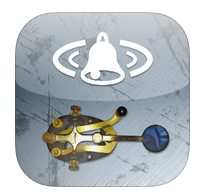 I recently came across this iPhone app that generates Morse Code ring tones called…wait for it…Morse Code Ringtone. I’ve used some other methods for generating Morse ring tones but I’ve found this one to be particularly easy to use. The app costs $1.99 so it is quite affordable.
I recently came across this iPhone app that generates Morse Code ring tones called…wait for it…Morse Code Ringtone. I’ve used some other methods for generating Morse ring tones but I’ve found this one to be particularly easy to use. The app costs $1.99 so it is quite affordable.
Well, there is one thing that is kind of tricky: actually getting the ring tone onto your iPhone. It appears that Apple has not made this very easy for app programmers, so it is a little tricky to do. The method I found to work is 1) use the app to create the ring tone on the iPhone 2) email it to my computer 3) save it somewhere on the computer 4) import it into iTunes using “File” “Add File to Library”. At this point, the ring tone should appear in iTunes and will be transferred to your iPhone the next time you sync.
After playing around with Morse Code tone and speed, I found that I really liked the sound of a 700 Hz tone sent at 30 wpm. My code speed is a somewhat reliable 15 wpm, so 30 wpm is well above my normal copy speed. Still, I like the sound of this quick burp of CW. I set up these short Morse bursts to indicate various messages:
CQ CQ - default ring tone TXT - text message VM - voice mail MAIL - email message
You can play these ringtones by clicking on the name above, or do a right-click to download them to your PC. Windows Media Player can play these files, but it gave me an error when I tried it. I just clicked through and it worked fine.
But you should really get the app and create some ring tones of your own.
73, Bob K0NR
